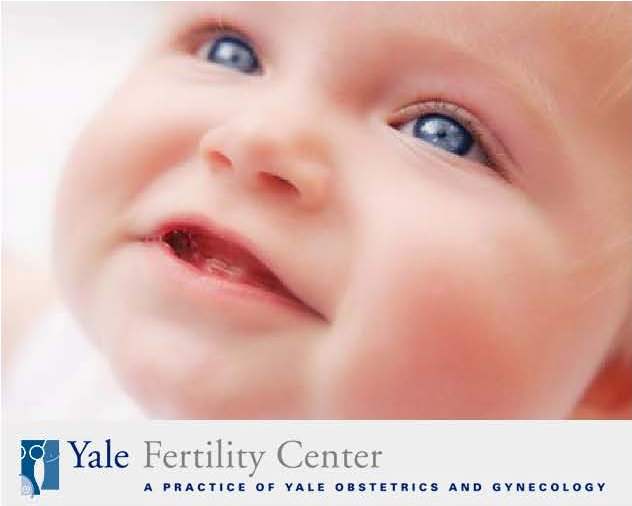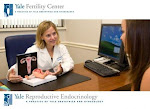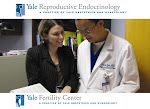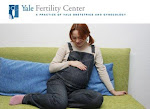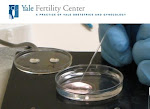
The name comes from the word "endometrium," which is the tissue that lines the uterus. During a woman's regular menstrual cycle, this tissue builds up and is shed if she does not become pregnant. Women with endometriosis develop tissue that looks and acts like endometrial tissue outside the uterus, usually on other reproductive organs inside the pelvis or in the abdominal cavity. Each month, this misplaced tissue responds to the hormonal changes of the menstrual cycle by building up and breaking down just as the endometrium does, resulting in internal bleeding.
Unlike menstrual fluid from the uterus which is shed by the body, blood from the misplaced tissue has nowhere to go, resulting in the tissues surrounding the endometriosis becoming inflamed or swollen. This process can produce scar tissue around the area which may develop into lesions or growths. In some cases, particularly when an ovary is involved, the blood can become embedded in the tissue where it is located, forming blood blisters that may become surrounded by a fibrous cyst.
A staging system has been developed by the American Society of Reproductive Medicine (formerly the American Fertility Society). The stages are classified according to the following:
Stage Level of Severity
Stage I minimal
Stage II mild
Stage III moderate
Stage IV severe
The stage of endometriosis is based on the location, amount, depth, and size of the endometrial implants. Specific criteria include:
* the extent of the spread of the implants
* the involvement of pelvic structures in the disease
* the extent of pelvic adhesions
* the blockage of the fallopian tubes
The stage of the endometriosis does not necessarily reflect the level of pain experienced, risk of infertility, or symptoms present. For example, it is possible for a woman in Stage I to be in tremendous pain, while a woman in Stage IV may be asymptomatic. In addition, women who receive treatment during the first two stages of the disease have the greatest chance of regaining their ability to become pregnant following treatment.
The causes of endometriosis are still unknown, although many theories abound. One theory suggests that during menstruation some of the tissue backs up through the fallopian tubes into the abdomen, a sort of "reverse menstruation", where it attaches and grows. Another theory states that certain families may have predisposing genetic factors to the disease. Current research is also looking at the role of the immune system in activating cells that may secrete factors which stimulate endometriosis.
How is endometriosis diagnosed?For many women, simply having a diagnosis of endometriosis brings relief. Diagnosis begins with a gynecologist evaluating a patient's medical history and a complete physical examination including a pelvic exam. A diagnosis of endometriosis can only be certain when the physician performs a laparoscopy (a minor surgical procedure in which a laparoscope, a thin tube with a lens and a light, is inserted into an incision in the abdominal wall. Using the laparoscope to see into the pelvic area, the physician can often determine the locations, extent, and size of the endometrial growths.).
Other examinations which may be used in the diagnosis of endometriosis include:Biopsy- a procedure in which tissue samples are removed (with a needle or during surgery) from the body (often during a laparoscopy) for examination under a microscope; to determine if cancer or other abnormal cells are present.
Ultrasound- a diagnostic imaging technique which uses high-frequency sound waves to create an image of the internal organs.
Computed tomography (CT or CAT scan)- a non-invasive procedure that takes cross-sectional images of internal organs; to detect any abnormalities that may not show up on an ordinary x-ray.
Magnetic resonance imaging (MRI)- a non-invasive procedure that produces a two-dimensional view of an internal organ or structure.
What can be done to ease the pain of endometriosis?Simple tips that can help ease the pain of endometriosis include rest, relaxation, and meditation; warm baths; prevent constipation; regular exercise; use of hot water bottle or heating pad on your abdomen.
Treatment for endometriosisSpecific treatment for endometriosis will be determined by your physician based on:
- Your overall health and medical history
- Current symptoms
- Extent of the disease
- Your tolerance for specific medications, procedures, or therapies
- Expectations for the course of the disease
- Your opinion or preference
- Your desire for pregnancy
In general, treatment for endometriosis may include- "Watchful waiting" - to observe the course of the disease
- Pain medication - such as ibuprofen or other over-the-counter analgesics
- Hormone therapy, including:
- Gonadotropin-releasing hormone agonist (GnRH agonist), which stops ovarian hormone production, creating a sort of "medical menopause"
- Danazol, a synthetic derivative of testosterone (a male hormone)
- Oral contraceptives, with combined estrogen and progestin (a synthetic form of progesterone) hormones, prevent ovulation and reduce menstrual flow
- Progesterone alone
Surgical techniques which may be used to treat endometriosis include:Laparoscopy- (also used to help diagnose endometriosis) a minor surgical procedure in which a laparoscope, a thin tube with a lens and a light, is inserted into an incision in the abdominal wall. Using the laparoscope to see into the pelvic area, the physician can often remove the endometrial growths.
Aparotomy- a more extensive surgery to remove as much of the displaced endometrium as possible without damaging healthy tissue.
Hysterectomy- surgery to remove the uterus and possibly the ovaries.
Sometimes a combination of therapies are used, such as conservative surgery (laparoscopy or laparotomy), along with hormone therapy.
Some women also benefit from alternative treatments used in conjunction with other medical and surgical therapies for the treatment of endometriosis.
These include:
- Traditional Chinese medicine
- Nutritional approaches
- Homeopathy
- Allergy management
- Immune therapy
It is important to discuss any/all of these treatments thoroughly with your physician, as some may conflict with the effectiveness of others.
Where are endometrial implants often found?Endometriosis is most often found in the ovaries, but can also be found in other places (indicated above in purple), including:
- The fallopian tubes
- Ligaments that support the uterus
- The internal area between the vagina and rectum
- Outer surface of the uterus
- In the lining of the pelvic cavity
Occasionally, the implants are found in other places, such as:
- Intestines
- Rectum
- Bladder
- Vagina
- Cervix
- Vulva
- Abdominal surgery scars
While any woman may develop endometriosis, the following women seem to be at an increased risk for the disease:
- Women who have first-degree relative (mother, sister, daughter) with the disease
- Women who are giving birth for the first time after age 30
- Caucasian women
- Women with an abnormal uterus
The following are the most common symptoms for endometriosis, however, each individual may experience symptoms differently.
Symptoms of endometriosis may include:- Pain, especially excessive menstrual cramps which may be felt in the abdomen or lower back
- Pain during intercourse
- Abnormal or heavy menstrual flow
- Infertility
- Fatigue
- Painful urination during menstrual periods
- Painful bowel movements during menstrual periods
- Other gastrointestinal problems (i.e., diarrhea, constipation, and/or nausea)
It is important to note that the amount of pain a woman experiences is not necessarily related to the severity of the disease - some women with severe endometriosis may experience no pain, while others with a milder form of the disease may have severe pain or other symptoms
